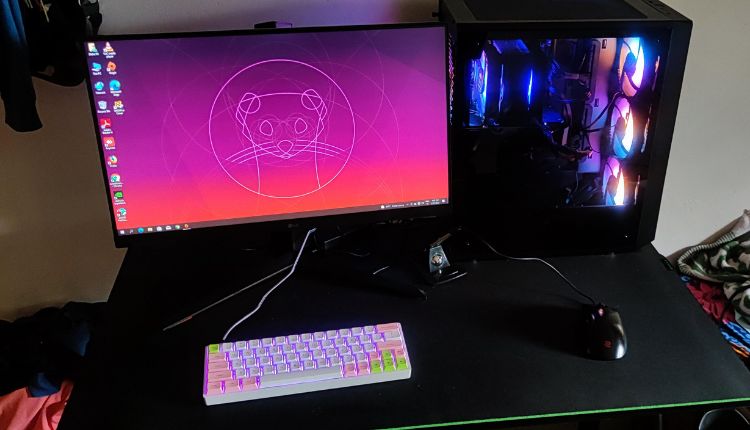
Gaming PC
Welcome to the exciting world of gaming PCs! Whether you’re a casual gamer looking to dip your toes into the expansive gaming universe or a budding enthusiast eager to maximize gaming performance, building your gaming PC is a rewarding and educational adventure. This isn’t just about playing games—it’s about creating a custom system tailored to your needs, offering superior performance and endless customization. Let’s explore how you can transition from novice to pro in setting up your very first gaming PC.
Why Choose a Gaming PC Over a Console?
In recent years, gaming PCs have gained popularity over traditional gaming consoles. One significant advantage is the level of customization you can achieve. With a PC, you can handpick each component, ensuring that it meets your gaming needs perfectly. Unlike consoles, which have fixed hardware, a PC allows you to upgrade parts over time, keeping your setup current without buying a whole new system.
Another notable benefit is the performance. PCs often offer better graphics, smoother gameplay, and faster loading times. This is because PCs can house more powerful hardware than consoles, which are designed to be compact and cost-effective. If you’re a gamer who values visuals and responsiveness, a gaming PC could be the ideal choice.
Furthermore, PCs offer versatility beyond gaming. You can use them for productivity tasks, creative projects, or streaming media. This multi-functionality makes a gaming PC an excellent investment for both entertainment and work. The ability to switch from gaming to browsing to working seamlessly adds to the allure of building your machine.
Essential Components for Your Gaming PC
Before you can start building, you need to understand the key components that make up a gaming PC. Each part plays a critical role in the overall performance and functionality of your setup. Here’s a breakdown of what you’ll need:
Processor (CPU): The brain of your computer, the CPU handles all the instructions from your software. It’s crucial for processing game data and running applications smoothly.
Graphics Card (GPU): This component is responsible for rendering images and video. A powerful GPU ensures high-quality graphics and smooth gameplay, making it essential for gaming.
Memory (RAM): RAM temporarily stores data that your CPU uses in real time. More RAM allows for better multitasking and can improve game performance.
Storage: You’ll need a place to store your games and system files. Many gamers opt for a combination of SSDs and HDDs.
Motherboard: This is the main circuit board that connects all components. Make sure your motherboard is compatible with your CPU, GPU, and RAM.
Power Supply (PSU): The PSU provides power to all components. Choose a unit with enough wattage to support your entire system.
Case: The case houses all your components. Consider both aesthetics and functionality when choosing your custom case, as space and airflow are critical.
Choosing the Right Components
Selecting the right components can feel overwhelming, but with a bit of research, you can make informed decisions. Compatibility is key; ensuring your CPU fits your motherboard is just the start. You’ll also need to check RAM compatibility and ensure your power supply can handle the load.
Performance is another critical factor. For gaming, prioritize a powerful GPU and enough RAM to handle the latest titles. If you’re on a budget, determine which components you can upgrade later and focus on essentials now.
Your budget will ultimately guide your choices. Set a realistic budget and try to stick to it. Remember, spending more on components like the GPU and CPU can significantly impact gaming performance, so prioritize these when allocating funds.
Assemble Your Gaming PC Step-by-Step
With your components in hand, it’s time to assemble your gaming PC. Follow these steps to ensure a smooth build process:
- Prepare Your Workspace
Clear a workspace and gather your tools. You’ll need a screwdriver, thermal paste, and an anti-static wristband to prevent damaging sensitive components.
- Install the CPU and Cooler
Start by installing the CPU onto the motherboard. Apply the thermal paste and attach to the cooler to prevent overheating.
- Mount the Motherboard
Secure the motherboard inside the case, connecting it to the power supply and other components.
- Install RAM and GPU
Insert the RAM sticks into their slots, then install the GPU into the appropriate slot on the motherboard.
- Connect Storage Drives
Attach your SSDs and HDDs to the motherboard, ensuring they are securely fastened.
- Tidy Up Cables
Use cable ties to organize your cables, improving airflow and aesthetic appeal.
Optimizing Your Gaming PC for Performance
Once your PC is built, the next step is optimization. Start by installing the latest drivers and software updates for your GPU and other components. Keeping software current is crucial for maximizing performance and stability.
Temperature monitoring is also essential. Use software tools to track your system’s heat levels, ensuring everything stays within safe operating temperatures. If necessary, adjust fan speeds or consider additional cooling solutions.
For advanced users, overclocking can unlock extra performance. This involves tweaking your CPU and GPU settings to run faster than their default speeds. While this can boost performance, it can also increase heat and reduce lifespan, so proceed with caution.
Troubleshooting Common Issues
Even with careful assembly, issues can arise. Here are some common problems and how to address them:
No Power: Double-check that all cables are securely connected and the power supply is switched on.
No Display: Ensure your monitor is properly connected to the GPU and that the GPU is seated correctly in the motherboard.
Overheating: Check that all fans are working and that thermal paste is applied correctly. Consider adding extra cooling if needed.
Slow Performance: Update drivers and check for malware. If issues persist, consider adding more RAM or upgrading your GPU.
Conclusion
Building your gaming PC is more than just assembling parts—it’s a lifelong learning experience. You’ll gain insights into computer mechanics and join a community of like-minded enthusiasts eager to share knowledge and experiences. A custom-built machine not only elevates your gaming to new heights but also serves as a powerful tool for work and creativity.
If you’re ready to take the plunge, start researching components and connecting with the PC-building community. There are countless resources and forums where you can seek advice and share your progress. With patience and effort, you’ll soon transform from a novice to a seasoned pro, ready to tackle any gaming challenge that comes your way.






